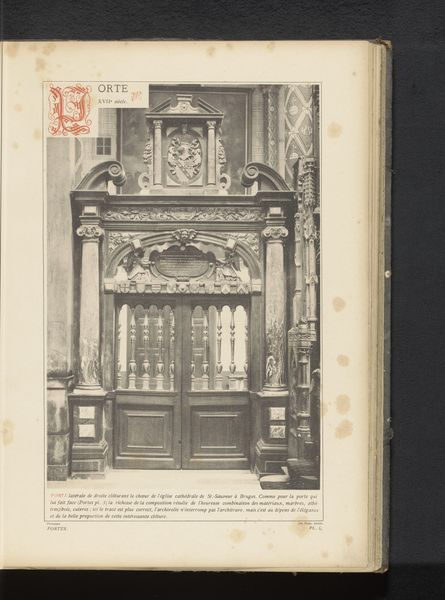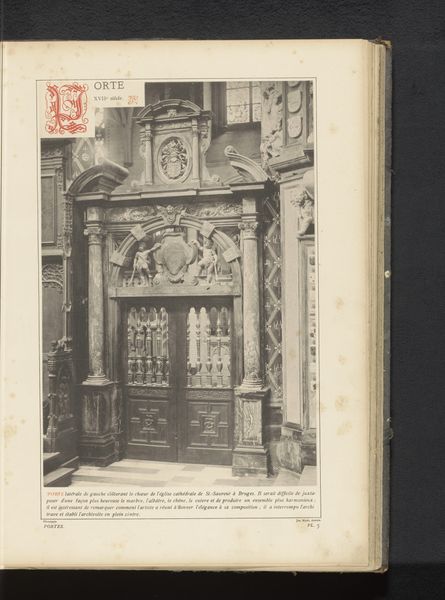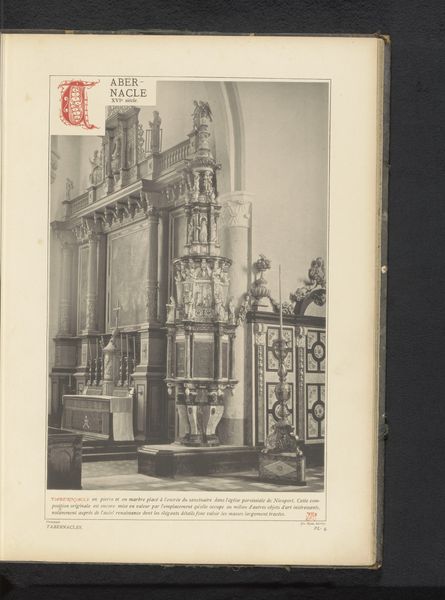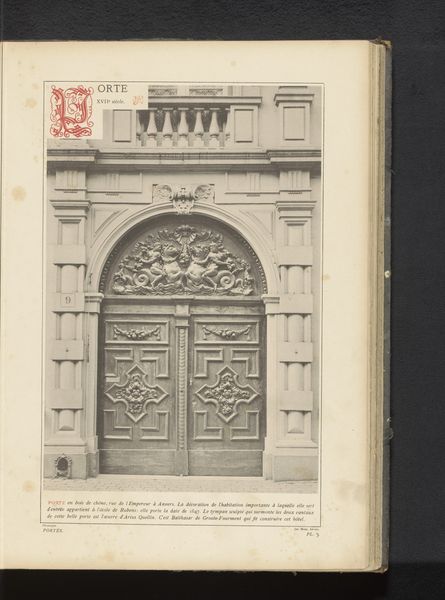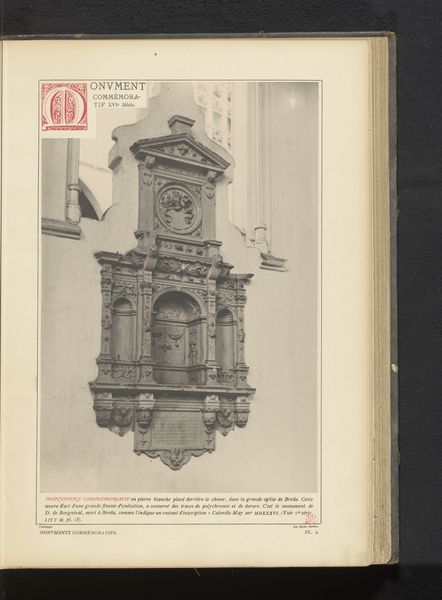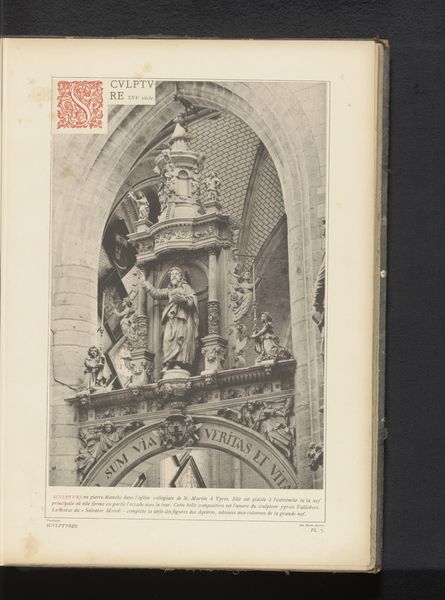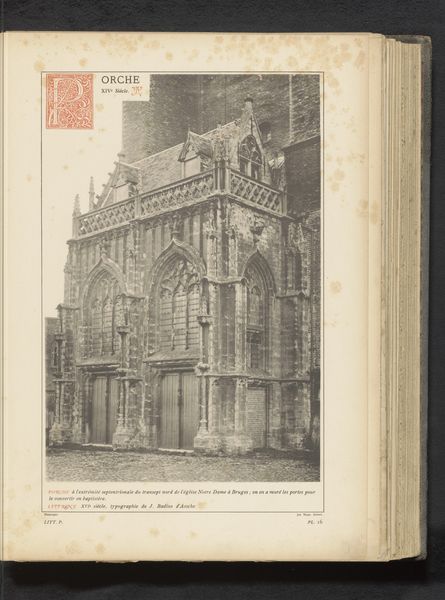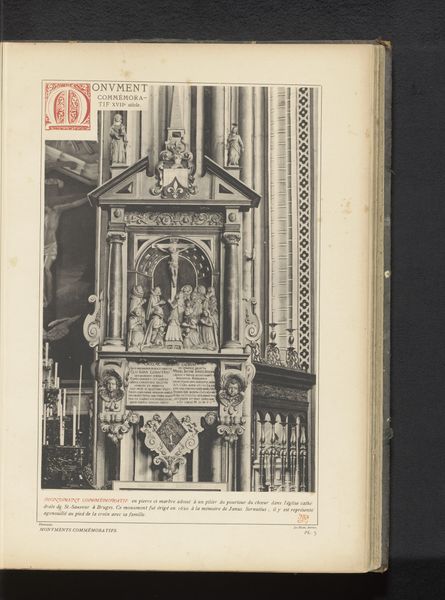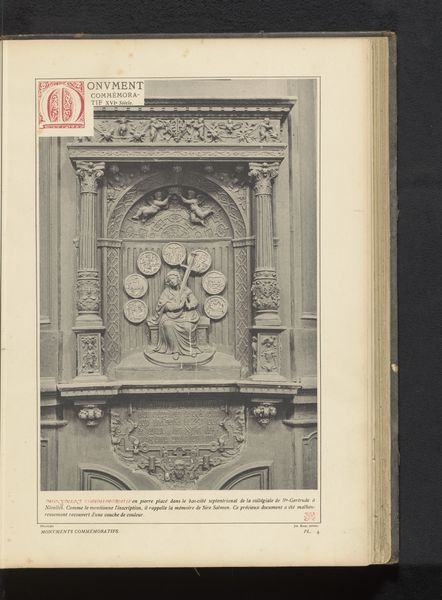
Gedecoreerde deur van eikenhout in de Sint-Pieterskerk in Leuven, België before 1887
0:00
0:00
carving, print, relief, photography, wood, architecture
#
medieval
#
carving
# print
#
relief
#
figuration
#
photography
#
wood
#
history-painting
#
architecture
Dimensions: height 341 mm, width 230 mm
Copyright: Rijks Museum: Open Domain
Curator: This fascinating print captures the decorated oak door of St. Peter's Church in Leuven, Belgium, sometime before 1887. What's your immediate take? Editor: Intricate! Almost oppressively so. All those figures and patterns...it feels very much a statement of power and permanence. But who held that power, I wonder? Curator: From a purely formal standpoint, the layering and relief are striking. Observe how the artist uses shadow to create depth, emphasizing the sculptural qualities of the wood. It's a masterful blend of architectural and figurative elements. Editor: Absolutely. And beyond the artistry, it speaks volumes about the social structures of the time. A church door wasn't just a physical barrier, it was a symbolic threshold—a gateway to salvation, yes, but also a visual reinforcement of the Church’s authority over the lives of the people. What narratives are deliberately, or inadvertently, put on display here? Curator: Indeed, the arrangement of the figures creates a kind of visual hierarchy. Notice the deliberate use of symmetry; each element carefully balanced to create a sense of order and divine structure, from the door’s base to the very top of the carving. Editor: That's exactly what strikes me as particularly of its era! It isn't only beautiful or even spiritual. It's a kind of propaganda. Who commissioned this piece, and for what purpose? Was it designed to inspire reverence or perhaps, subtly, to quell dissent? Medieval church doors like this became a powerful way to instruct on acceptable Christian behavior while implying, subtly or not, consequences for stepping out of line. Curator: Such an early photograph is a gift because it freezes this moment, highlighting this door’s material qualities—its texture and tonal values. Editor: Agreed, seeing how light falls across that intricate woodwork underscores its symbolic role—as both history, but also artifact in and of itself. It really invites one to ask about its place in time and within its culture, wouldn't you agree? Curator: I do. Thank you, those critical insights bring the very medium of this art—not just its depiction—into sharper focus.
Comments
No comments
Be the first to comment and join the conversation on the ultimate creative platform.
